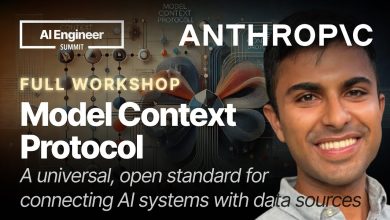What is Agentic RAG?
Agentic Retrieval-Augmented Generation (RAG) is an advanced concept in AI that builds upon the foundational idea of Retrieval-Augmented Generation by incorporating autonomous, goal-directed agents into the process.
Large language models usually give great answers, but because they’re limited to the training data used to create the model. Over time they can become incomplete–or worse, generate answers that are just plain wrong.
One way of improving the LLM results is called “retrieval-augmented generation” or RAG.
In this video, IBM Senior Research Scientist Marina Danilevsky explains the LLM/RAG framework and how this combination delivers two big advantages, namely: the model gets the most up-to-date and trustworthy facts, and you can see where the model got its info, lending more credibility to what it generates.
What is RAG?
Retrieval-Augmented Generation is a hybrid approach that combines a retrieval mechanism with a generative language model. In traditional RAG:
- A system retrieves relevant documents, data, or context from an external knowledge base (e.g., a database, the web, or a set of documents) based on a user’s query.
- This retrieved information is then fed into a generative model (like a transformer-based language model) to produce a coherent and contextually informed response.
It’s particularly useful for grounding AI responses in factual or up-to-date information, reducing “hallucinations” (where the AI makes up plausible but incorrect answers).
The “Agentic” Twist
The term “agentic” refers to the integration of agency—the ability to act autonomously, make decisions, and pursue goals. In Agentic RAG, the system doesn’t just passively retrieve and generate; it actively engages in a more dynamic, reasoning-driven process. Here’s how it differs:
- Autonomous Decision-Making: An agentic system can decide what to retrieve, how to refine the query, or even whether additional information is needed to answer effectively. It’s not just following a static pipeline but adapting based on the task.
- Goal-Directed Behavior: The agent has an objective (e.g., “provide the most accurate answer” or “solve a multi-step problem”) and can break down the process into sub-tasks, such as retrieving data, cross-checking facts, or seeking clarification.
- Iterative Reasoning: Instead of a one-shot retrieval-and-generate process, Agentic RAG might iterate—retrieving information, generating a partial response, evaluating its quality, and then seeking more data if needed.
- Tool Usage: These agents can leverage external tools (e.g., web search, APIs, or even other AI models) to enhance their retrieval and reasoning capabilities, making them more proactive.
How It Works in Practice
Imagine you ask, “What’s the latest breakthrough in quantum computing?” A traditional RAG system might:
- Retrieve a few recent articles.
- Generate a summary based on that.
An Agentic RAG system might:
- Start by retrieving initial articles.
- Notice the articles mention a specific research paper but lack detail.
Decide to search for the paper or related posts on X for primary sources. - Cross-reference claims to ensure accuracy.
- Generate a response while explaining its process: “I found X, then checked Y, and here’s the consolidated answer.”
Why It Matters
Agentic RAG represents a shift toward more intelligent, self-directed AI systems. It’s particularly powerful for:
- Complex, multi-step queries where a single retrieval isn’t enough.
- Dynamic environments where information changes rapidly (e.g., news, science).
- Tasks requiring critical thinking, like fact-checking or synthesizing disparate sources.
In essence, Agentic RAG turns a passive knowledge-fetching system into an active problem-solving partner. It’s like having a research assistant who doesn’t just hand you papers but figures out what you need and why.



